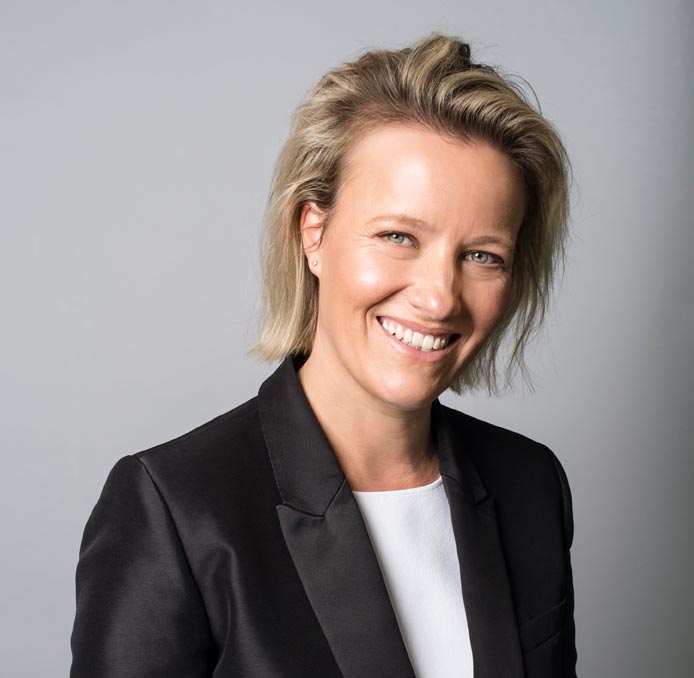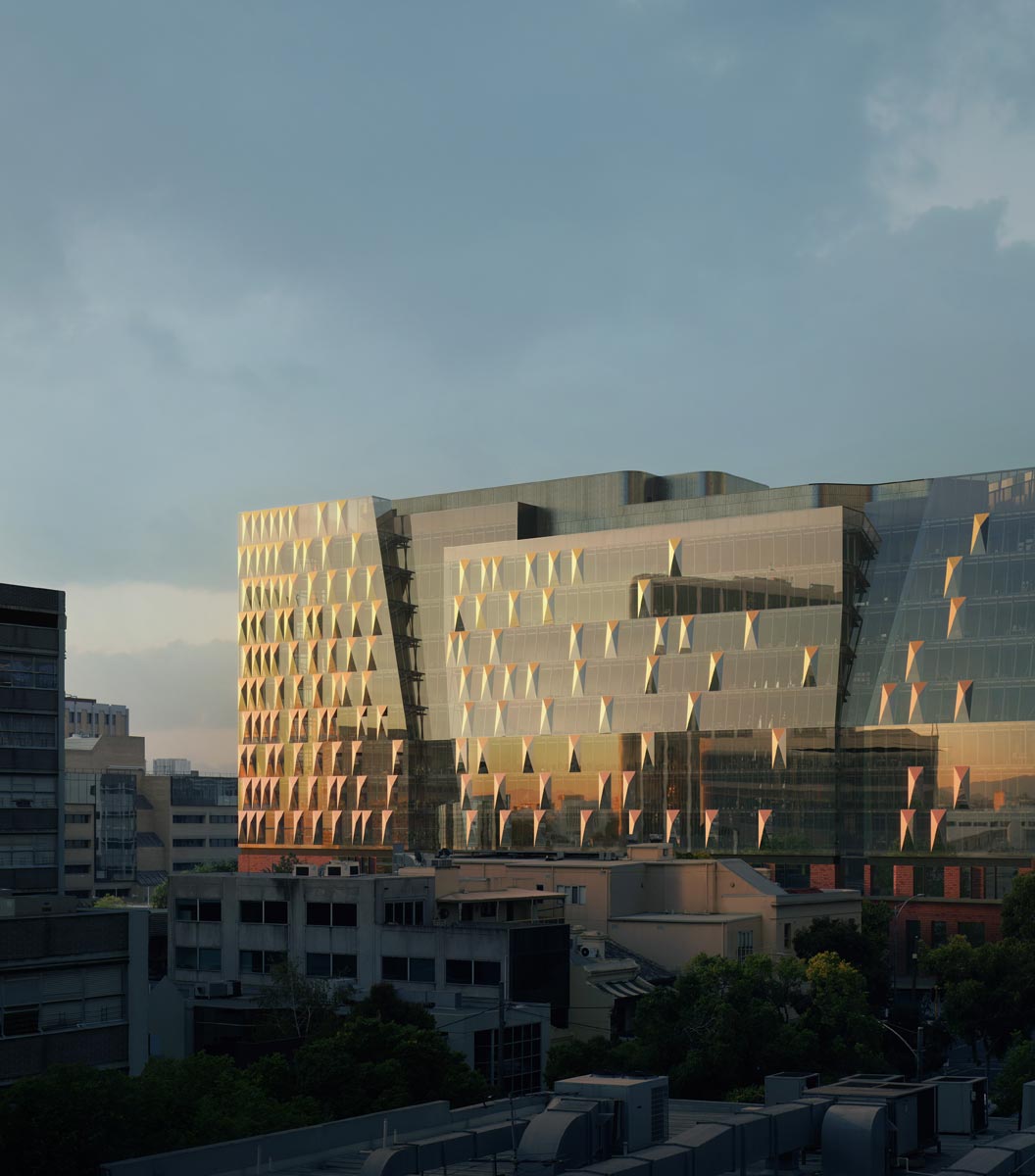As an architecture student at Melbourne School of Design, Sarah Ball pictured working in a small firm focusing on residential projects. Now the Principal, Global Sector Leader – Education at Woods Bagot, she focuses on spaces that shape student experiences.
She is one of the design team for the Carlton Connect Initiative, a new innovation precinct in development by the University of Melbourne and its partners. Here, Ms Ball shares insights into her career trajectory and the skills she has drawn on to navigate the learning curves.

What attracted you to architecture and the built environment?
My father is an architect and University of Melbourne alumnus too. Through him, I was exposed to architecture from an early age in a way I might not otherwise have been. I clearly remember the large technical drawings he would bring home. The precision of the lines, notations and the composition on the page – to me they were an artwork in themselves. In that sense, I was first attracted more to the representation of architecture and it was something my art teacher encouraged me to pursue in my final year at school. When deciding my university preferences, I seriously considered fine arts, fashion or interior design. However, my father’s influential advice was that an architecture degree was all-encompassing, and would give me the strongest of foundations and set me off on whatever path I might later choose.
Besides the technical, are there any skills you’ve found crucial to pursuing a career in architecture?
Early on, I learned the importance of being able to think laterally, push boundaries and be self-directed. While senior staff can provide great guidance as you develop your technical skills, you also need to be able to seek out answers and develop solutions to problems yourself to then present for feedback. You also need to be able to genuinely collaborate with others. Architecture is a collective pursuit, which sees you work with a wide range of people in various areas of specialisation, both within your own organisation and externally with consultants and your client. Your capacity to communicate your ideas – and to be open to professional criticism – is crucial. You need to continue to develop and hone strong visual, verbal and written communication skills.

Has your career followed the trajectory you expected while studying at MSD?
When I was studying at MSD I didn’t realise how varied a career in architecture can be. Initially I thought of working in smaller firms that focused on residential projects. Instead, I’ve always worked in large firms, here in Melbourne as well as London, where I developed a passion for educational projects. I joined Woods Bagot in 2006, which was a pivotal time for the firm as it embraced a global studio strategy that has seen it grow considerably beyond Australia. This growth opened up great opportunities to collaborate with peers on projects beyond Melbourne and Australia which, as a young architect, was very appealing and exposed me to working with some incredibly talented people.
Is there a moment or achievement in your career to date that makes you particularly proud?
Visiting completed projects always makes me extremely proud, as I know how much focused effort was involved to see them come to fruition. A project goes through so many stages from the bid, working with stakeholders and the team to design and document the building and then working with the builder to realise that original vision on site. It’s also incredibly rewarding to see people using and experiencing beautifully crafted spaces in the way you envisaged and in ways you’d not even imagined.
Becoming a principal at Woods Bagot quite early on in my career is also an achievement I’m proud of. To be an owner in a large firm came with a completely new level of responsibility in terms of leading a practice and was a huge learning curve. Collectively we’ve developed and established a great studio culture that’s always striving to improve and deliver exceptional design outcomes.
What do you find exciting about your current work on education projects?
The education sector is an exciting area to work in as we always strive to challenge the status quo and no two projects are the same. Working on both school and higher education projects, it’s rewarding to be involved in projects that will shape students’ education experience. We get to work with so many brilliant teachers and academics doing amazing things often in sub-standard spaces – but they still have this desire to create something unique and have a powerful impact on students’ lives. To conceptualise and create new and reimagined spaces, and provide architecture that inspires and enables – rather than limiting their imagination – is an exciting space to work in.